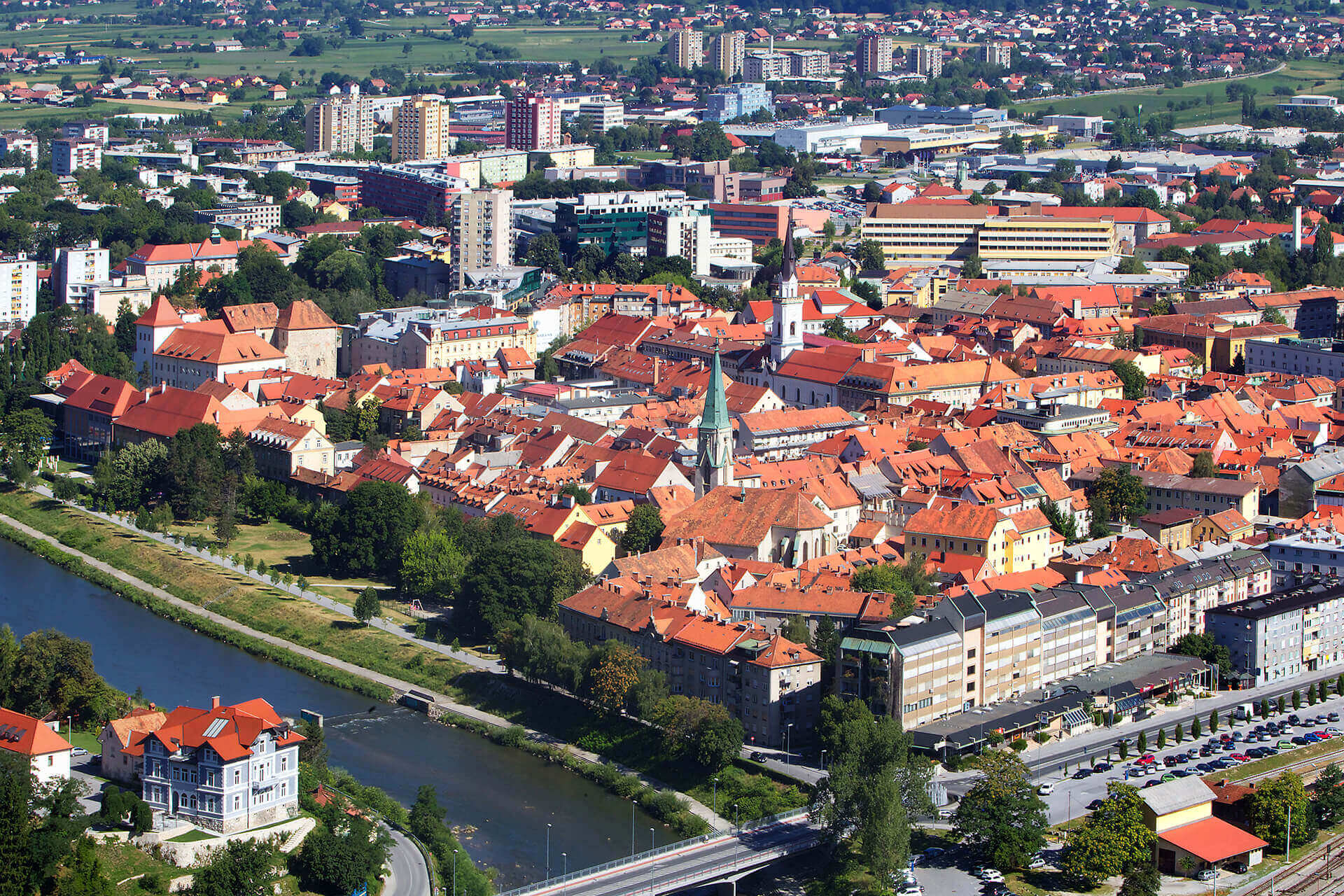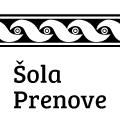Under the stars of mighty Counts of Cilli
Even a short stop in one of the historical towns of Slovenia offers plenty of inspiring stories. The selected walks lead to the most important city sights, include local cuisine and offer detours to the green surroundings. When you go for a walk, you change from a visitor to a researcher of the true character of the town.
The square of Great arrivals
Start your tour of the picturesque city centre at Krekov trg Square. From the railway station, which has been a perfect choice for coming to the city since 1846, look up at the imposing neo-Gothic building of the Celje House (1), once a social centre of the German bourgeoisie, and at the savings bank building of the Celjska mestna hranilnica (2), built in 1887, modelled after Henry’s Court in Vienna. Take a walk by the floor fountain and greet Alma M. Karlin (3) , the most cosmopolitan Celje woman, who set off on her own around the world in 1919 . The statue by the fountain looks as if she had just travelled back to her hometown by train.
A Tip: On Krekov trg Square there is also the Hotel Evropa, one of the oldest hotels in Celje. Its café is a popular gathering place of the locals.
(From this to the next point: 2 minutes
A ancient street for a look into the future
After the hotel, turn right into Gubčeva ulica Street, which uniquely combines different times of the city. Here you can see a preserved early Christian baptistery (4), built at the end of the 4th or in the early 5th century. It was probably part of a larger church complex. A part of the city wall has been preserved in the street since medieval times, while Tehnopark (5), the largest science and entertainment park in Slovenia, invites you to the future. Enter and experience science and technology in a new way! On several floors, you learn about natural phenomena, the workings of electricity, the structure and workings of the human body, the “reality of illusions” and the technological challenges of the future.
Recommended time for viewing: 90 minutes (from this to the next point: 3 minutes)
To Plečnik's pillars and the market
From Gubčeva ulica Street, continue to Cankarjeva ulica Street and turn left. At the intersection you will see the Ljudska posojilnica loan bank (6), the most important building of the interwar period. It was built in 1929 according to the plans of the famous architect Jože Plečnik. Look at the colonnaded balconies and the bronze crucifix on the roof. Behind the pharmacy opposite the savings bank turn into a narrow alley and continue to the city market (7). Here, the offer of local fresh food is complemented by an interesting restaurant offer next to the market place.
(from this to the next point: 5 minutes)
Among toys and craftmen
From the market we turn to Muzejski trg Square, where the most notable building is that of the Museum of Recent History Celje (8) with a balcony from which the townspeople were addressed by various authorities. In the museum, you can walk along Craftsman Street (9) and occasionally get to know the work of craftsmen alive. Children are inspired by Herman’s Den (10), the only children’s museum in Slovenia with a den, in which more than 400 toys from different time periods are on display. After the tour of the museum, treat yourself to a dessert – a Celje rol’ca (11). A little further on, Josip Pelikan greets you on Trg celjskih knezov Square (12). Behind the original statue of this exceptional photographer, you can enter the Art Salon (13 ), where exhibitions of contemporary art are on display.
A Tip: In Celje, there is Pelikan’s glass photo atelier from 1899. By prior arrangement, you can still take photos in the studio with preserved original photographic equipment – also in costumes from the beginning of the 20th century. Arrange a visit at the Museum of Recent History.
Recommended time for viewing: 60 minutes (From this to the next point: 5 minutes)
The city beneath the city
Trg celjskih knezov Square is laid out at the National House (14), an important symbol of Slovenia and a centre of Slovenian bourgeoisie at the time of the foreign rule and influence. Right next to it is the medieval Prince’s Mansion (15), a former city residence of the Counts of Cilli. The building houses the Gallery of Contemporary Art (16). The Mansion offers an exhibition on the rise and fall of the Counts of Cilli dynasty while the most beautiful discoveries of the city await you in the rooms beneath the Mansion. Here is an impressive exhibition Celeia – The City Beneath the City (17) – the biggest presentation of the thriving Roman city with the reconstruction of its main street, the remains of the city villas and many other finds from the ancient time.
Recommended time for viewing: 60 minutes (From this to the next point: 3 minutes)
To Muzejski trg square and the river
The street paved in cobblestone brings you to Muzejski trg and the Old Landgrave’s House, which manages the south panorama of the city with its mightiness. It houses the Celje Regional Museum (18), where you can see, among other things, the famous Celje Ceiling, and get to know Alma M. Karlin’s journey around the world in more detail. After the tour, stop by the Savinja River using the underpass at the city library. From here you can admire the view of the Old Castle (19). Walk along the riverside promenade past the houses from the preserved city wall to the church of St. Daniel (20) with the Gothic chapel of the Sorrowful Mother of God and the stone statue of Pieta.
A Tip: You can walk across the bridge over the Savinja to the park and on to the Celje City Forest with a unique tree house, the largest in Slovenia. On the way there, there are also a forest children’s playground and various forest educational paths.
Recommended time for viewing: 60 minutes (from this to the next point: 15 minutes)
To Glavni trg square and Alfred Nobel
The statue of Mary (21) directs you to the nearby Glavni trg Square. The statue, erected in 1776, was placed by the townspeople where it had previously been a pillar of shame for punishing criminals. Not far away, in the corner of a house, is a statue of Alfred Nobel (22), who was brought to Celje by love. On the way through this picturesque square, stop at the Archaeology Presentation Pavilion (23), where you can see the remains of a Roman villa and a medieval town hall in its original place. The pavilion also houses the Tourist Information Centre (24) and a souvenir shop.
Recommended time for viewing: Xx minutes (From this to the next point: XXX minutes)
The city star and cosmopolitan dreams
When you return to the starting point, stop for a moment at the city star – the junction of the main city streets. From here you see the train station – your starting point for wanderings around the city. When you return to the statue of Alma M. Karlin (3), you might want to see different living spaces. After refreshments in a nearby bar, visit the Tropical House (25) in the Celje House and get to know animals in five different ecosystems from other parts of the world. Dream like the people of Celje – and get to know the world!
Suggestion for a hike
To lake Šmartinsko jezero
Continue your journey through the city of famous history in the green surroundings. 6 km away is Lake Šmartinsko jezero with attractive walking and educational trails. One of them also leads over a pontoon bridge over the water. Kayaks and pedal boats can be rented. Here you can indulge in the adrenaline-fuelled experience of the wake lift and acrobatic diving. The lake attracts fishermen, who expect record catches here. The largest carp caught in the lake weighed as much as 34.6 kg.
More information: TIC Celje
www.visitcelje.eu
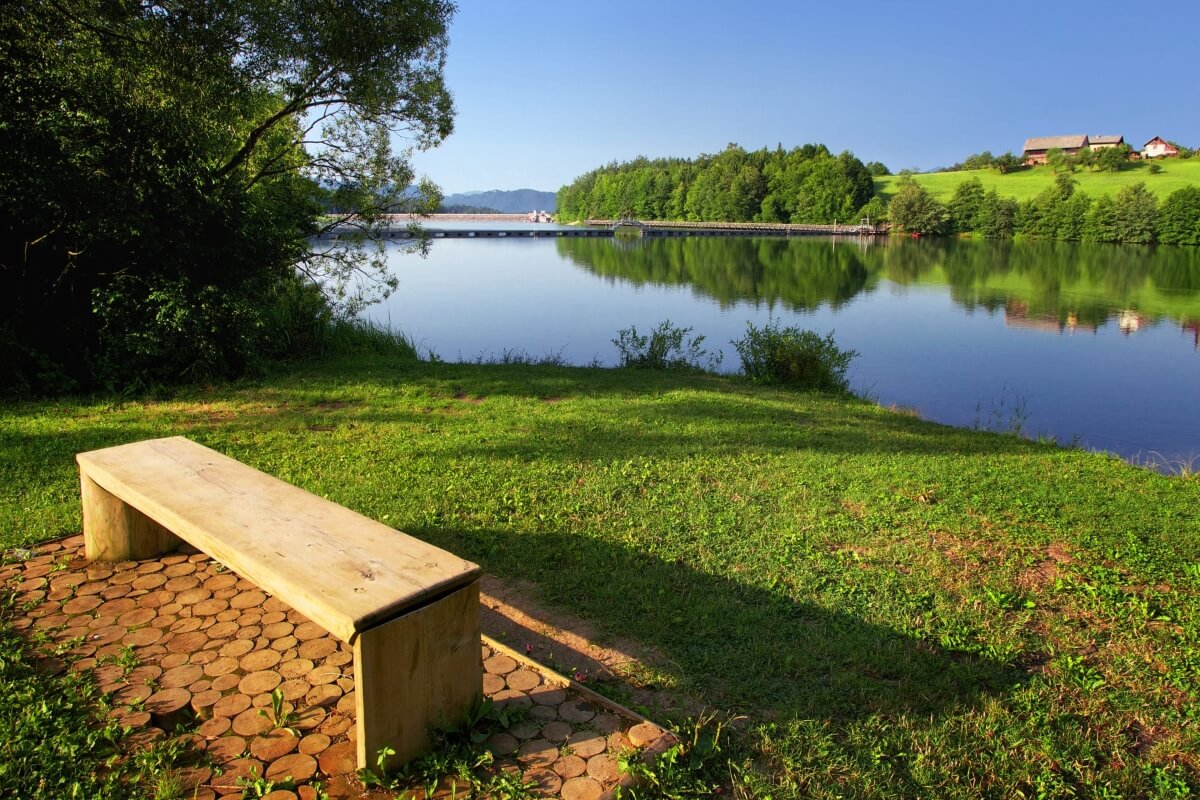
1. CELJSKI DOM
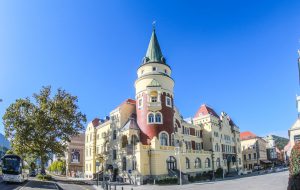 At the turn of the 19th and 20th centuries, when the city bourgeoisie was divided into the Celje Slovenians and the Celje Germans, the latter built a neo-Gothic centre of their social life. The German house that gave the newcomers to the city the impression of an essentially German city (urdeutsche Stadt), changed its name to the Celje House in 1919, after the First World War. Several cultural societies operated in it. The halls of the Celje House host various events.
At the turn of the 19th and 20th centuries, when the city bourgeoisie was divided into the Celje Slovenians and the Celje Germans, the latter built a neo-Gothic centre of their social life. The German house that gave the newcomers to the city the impression of an essentially German city (urdeutsche Stadt), changed its name to the Celje House in 1919, after the First World War. Several cultural societies operated in it. The halls of the Celje House host various events.
Krekov trg 3, T: 03 428 79 30
2. The Celjska mestna hranilnica savings bank
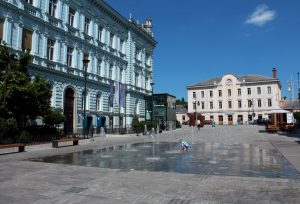 The neo-Renaissance palace with the detailed façade constructed in the central part of the second floor is adorned with triangular windows. The plan for the palace was modelled on the Henry’s Court in Vienna, prepared by the architect Hans Fraueneder. The palace was built by the Celje City Savings Bank, established in 1864. This was the first financial institution of the city, which was rapidly developing after the arrival of the railways. Banking institutions still operate in the building today.
The neo-Renaissance palace with the detailed façade constructed in the central part of the second floor is adorned with triangular windows. The plan for the palace was modelled on the Henry’s Court in Vienna, prepared by the architect Hans Fraueneder. The palace was built by the Celje City Savings Bank, established in 1864. This was the first financial institution of the city, which was rapidly developing after the arrival of the railways. Banking institutions still operate in the building today.
Krekov trg 6
3. The statue of Alma M. Karlin
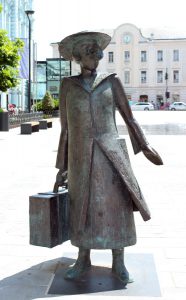 Alma M. Karlin (1889 – 1950) from Celje was a world traveller, writer, amateur researcher, polyglot and theosophist. In the years 1919 – 1927, she travelled all continents of the world except for the Antarctic. She travelled alone and made a living by writing, translating, and teaching. After eight years of travels, she returned to her hometown by train with a suitcase in one hand and an Erika typewriter in the other. The statue of Alma Karlin is the work of the sculptor Vasilije Ćetković – Vasko. You can get to know the life and work of Alma Karlin at an exhibition in the Celje Regional Museum and in Alma’s House in Pečovnik. More information: TIC Celje
Alma M. Karlin (1889 – 1950) from Celje was a world traveller, writer, amateur researcher, polyglot and theosophist. In the years 1919 – 1927, she travelled all continents of the world except for the Antarctic. She travelled alone and made a living by writing, translating, and teaching. After eight years of travels, she returned to her hometown by train with a suitcase in one hand and an Erika typewriter in the other. The statue of Alma Karlin is the work of the sculptor Vasilije Ćetković – Vasko. You can get to know the life and work of Alma Karlin at an exhibition in the Celje Regional Museum and in Alma’s House in Pečovnik. More information: TIC Celje
Krekov trg
4. The old Christian baptistery
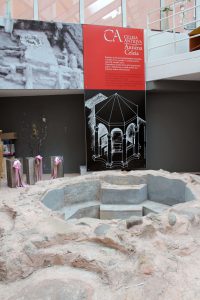 The old Christian baptistery from the turn of the 4th and the 5th centuries has an octagonal baptismal pool. The baptistery shows one of the few proven early Christian elements of late antique town centres in Slovenia.
The old Christian baptistery from the turn of the 4th and the 5th centuries has an octagonal baptismal pool. The baptistery shows one of the few proven early Christian elements of late antique town centres in Slovenia.
Gubčeva ulica
5. TEHNOPARK
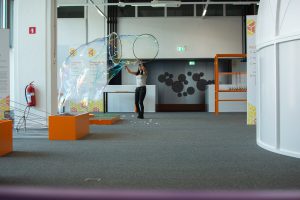 In the iconic multi-storey building of the former city department store, experience many interactive contents that shows natural phenomena, the workings of electricity, the structure and workings of the human body, the “reality of illusions” and the technological challenges of the future in an instructive and attractive way. Tehnopark, opened in 2020, is the largest science and entertainment park in Slovenia.
In the iconic multi-storey building of the former city department store, experience many interactive contents that shows natural phenomena, the workings of electricity, the structure and workings of the human body, the “reality of illusions” and the technological challenges of the future in an instructive and attractive way. Tehnopark, opened in 2020, is the largest science and entertainment park in Slovenia.
Gubčeva ulica 1, T: 03 828 20 90
6. LJUDSKA POSOJILNICA Loan bank
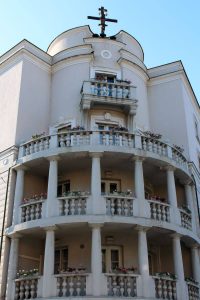 With some elements, the building is part of the heritage of the famous architect Jože Plečnik, but it was designed by his student Vinko Lenarčič. At its opening in 1930, the newspaper published the building was considered “a new monumental centre of the educational and economic organization of the Slovenian people.” The bank took the corner section, shops with windows were on the ground floor while the apartments were on the first floor. A part of the building was a theatre, which now houses the city cinema.
With some elements, the building is part of the heritage of the famous architect Jože Plečnik, but it was designed by his student Vinko Lenarčič. At its opening in 1930, the newspaper published the building was considered “a new monumental centre of the educational and economic organization of the Slovenian people.” The bank took the corner section, shops with windows were on the ground floor while the apartments were on the first floor. A part of the building was a theatre, which now houses the city cinema.
Vodnikova ulica 2
7. City Market
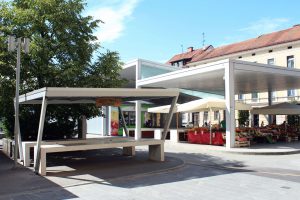 The covered city market stands in an area where there were gardens already in the Middle Ages. Today it is the heart of the city. The market, renovated in 2009, is inextricably linked to the neighbouring streets. It is designed with several roof surfaces, which with their offsets allow the market space to be naturally lit. The market is open all year round
The covered city market stands in an area where there were gardens already in the Middle Ages. Today it is the heart of the city. The market, renovated in 2009, is inextricably linked to the neighbouring streets. It is designed with several roof surfaces, which with their offsets allow the market space to be naturally lit. The market is open all year round
Between Savinovo and Linhartovo St.
8. The Museum of Recent History Celje
One of the most striking city buildings with a Renaissance core and a Classicist façade was the seat of the Celje city government from 1830 to 1853.
It now houses the Museum of Recent History Celje. In addition to interesting exhibitions in the former town hall, the Museum takes care of the Pelikan Photo Atelier and Gallery, which is the only preserved glass photography studio in Slovenia and one of the few in Europe. It also manages the Stari pisker prison with a memorial to victims of Nazi violence during the World War II.
Prešernova ulica 17, T: 03 428 64 10
9. The Museum Craftman street
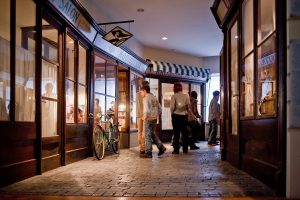 As part of the permanent museum exhibition Living in Celje, there is Craftsman Street with craftsmen’s workshops, a pharmacy and a middle-class apartment.
As part of the permanent museum exhibition Living in Celje, there is Craftsman Street with craftsmen’s workshops, a pharmacy and a middle-class apartment.
The masters of their crafts present equipment, accessories and products, craft knowledge and skills from the time between the First and Second World Wars in the workshops. A hairdresser, fashion designer, tailor, watchmaker, goldsmith, shoemaker, furrier, hatter and pharmacist are professions that you can occasionally experience first hand here. The museum also presents a unique dental database.
The Museum of Recent History Celje, Prešernova ulica 17, T: 03 428 64 10
10. Herman's Den
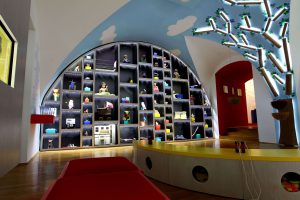 Herman’s Den, the only children’s museum in Slovenia, presents the history of toys to children. Visitors are guided by Herman the Fox, the mascot. The museum is home to the permanent exhibition Den of Toys, which presents as many as 400 toys from Slovenia and different time periods. There are also occasional exhibitions that bring children closer to the past and help them understand the present. The museum is also adapted to the sensory and movement impaired.
Herman’s Den, the only children’s museum in Slovenia, presents the history of toys to children. Visitors are guided by Herman the Fox, the mascot. The museum is home to the permanent exhibition Den of Toys, which presents as many as 400 toys from Slovenia and different time periods. There are also occasional exhibitions that bring children closer to the past and help them understand the present. The museum is also adapted to the sensory and movement impaired.
The Museum of Recent History Celje, Prešernova ulica 17, 03 428 64 10
11. Celjska rol'ca dessert
Celje is the centre of the Land of Celje, which offers visitors typical local dishes in different places. Celjska rol’ca is a popular dessert in the city. A hand-rolled roll made of crispy dough is coated with chocolate, sprinkled with crushed hazelnuts and filled with sweet cream.
12. The statue of Josip Pelikan
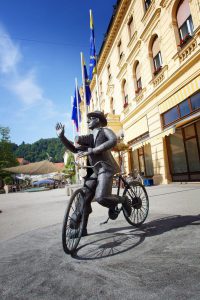 Josip Pelikan (1885 – 1977) was a famous photographer and master of portraits, who spent most of his life in Celje and documented city events. He has created more than 25,000 photographs. The statue created by the sculptor Vasilij Ćetkovič- Vasko shows him in a typical photographic pose on a bicycle. Josip Pelikan’s glass photo atelier is preserved and worth a visit. More information: Museum of Recent Hitory Celje
Josip Pelikan (1885 – 1977) was a famous photographer and master of portraits, who spent most of his life in Celje and documented city events. He has created more than 25,000 photographs. The statue created by the sculptor Vasilij Ćetkovič- Vasko shows him in a typical photographic pose on a bicycle. Josip Pelikan’s glass photo atelier is preserved and worth a visit. More information: Museum of Recent Hitory Celje
Trg celjskih knezov
13. Celje Art Salon
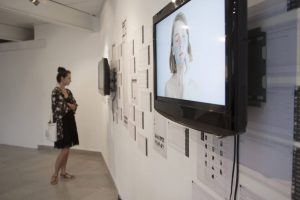 The Art Salon is one of the exhibition areas of the Centre for Contemporary Arts Celje, where passers-by can watch the works of contemporary art since 1963 through the glass entrance. The Salon focuses on the production of new projects by Slovenian and international artists.
The Art Salon is one of the exhibition areas of the Centre for Contemporary Arts Celje, where passers-by can watch the works of contemporary art since 1963 through the glass entrance. The Salon focuses on the production of new projects by Slovenian and international artists.
Trg celjskih knezov 9, T: 03 42 65 162
14. The National House
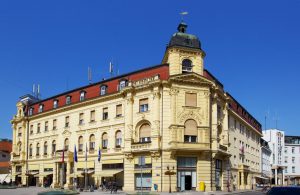 The Neo-Renaissance building from 1896 has been a cultural and social centre of the Celje people, but today it houses the City Municipality of Celje. Even today, it has the character of a cultural home: the building has four halls for various events and happenings. The large hall extends over two floors and is decorated with rich stucco.
The Neo-Renaissance building from 1896 has been a cultural and social centre of the Celje people, but today it houses the City Municipality of Celje. Even today, it has the character of a cultural home: the building has four halls for various events and happenings. The large hall extends over two floors and is decorated with rich stucco.
Trg celjskih knezov 9
15. The Prince's Mansion
The Counts of Cilli had this town mansion built throughout the 14th and 15th centuries and had it continuously expanded. The central part of the mansion are the living quarters with two knight’s halls. After the extinction of the Counts of Cilli family, the building underwent many changes. In the middle of the 18th century it was converted into a barracks. Today, it houses the archaeological exhibition Celeia – The City Beneath the City with the remains of a Roman city, the Counts of Cilli exhibition and From Sewing Needle to Stars exhibition, which represents the development of the area from prehistory onwards. The mansion also houses the Gallery of Contemporary Art.
Trg celjskih knezov 8
16. The Gallery of Contemporary Art
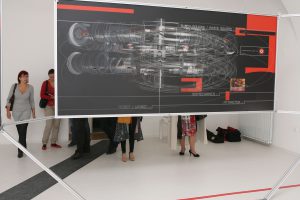
The gallery is one of the three exhibition areas of the Centre for Contemporary Arts Celje. Its permanent collection presents
the works of art by Celje-based artists, works by Slovenian authors and some international guest artists who visited Celje. The exhibitions in the gallery present and emphasize the diversity of contemporary practices and topics.
Trg celjskih knezov 8, T: 03 42 65 156
17. CELEIA – The City Beneath the City
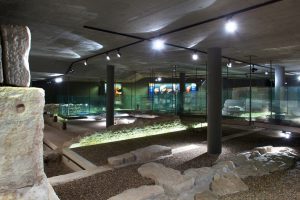 The archaeological exhibition Celeia – the City Beneath the City in the basement of the Prince’s Mansion is the largest presentation of the remains of the Roman Celeia “in situ”. The original settlement in the Celje area was called Keleia and was originally part of the Celtic state formation, and later a part of the Roman province of Noricum. The Romans conquered it in the 1st century AD. At the exhibition you can discover the life of a flourishing antique city with wide squares and streets.
The archaeological exhibition Celeia – the City Beneath the City in the basement of the Prince’s Mansion is the largest presentation of the remains of the Roman Celeia “in situ”. The original settlement in the Celje area was called Keleia and was originally part of the Celtic state formation, and later a part of the Roman province of Noricum. The Romans conquered it in the 1st century AD. At the exhibition you can discover the life of a flourishing antique city with wide squares and streets.
The Celje Regional Museum, Trg Celjskih knezov 8, T: 03 42 80 962
18. Celje Regional Museum
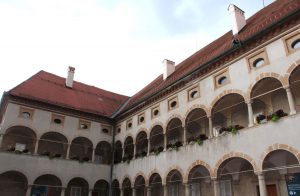 The Celje Regional Museum presents a part of its collections at the Old Landgrave’s House, built in the 16th and 17th centuries.
The Celje Regional Museum presents a part of its collections at the Old Landgrave’s House, built in the 16th and 17th centuries.
The central hall boasts the Celje Ceiling – a rare example of profane painting at the transition from Renaissance to Baroque. The eleven painted sections allegorically depict, among other things, the four seasons and everyday activities. See also the cultural-historical collection, a presentation of styles from Gothic to Historicism, adapted to visually impaired visitors, and the Paths of Alma M. Karlin Exhibition.
Muzejski trg 1, T: 03 42 80 962
19. The old castle of Celje
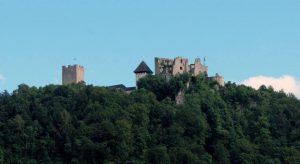 The castle, which can be seen from several points in the city, can be visited every day of the year. The largest medieval castle in Slovenia reveals the saga of the most powerful noble family from the Slovenian territory and offers special experiences. The castle, the roots of which go back to the 12th century, used to control all traffic routes to the city as a fort. Plan your visit. In addition to a tour and a view of the city, visit the Frederick tower and enter the medieval stories with augmented reality.
The castle, which can be seen from several points in the city, can be visited every day of the year. The largest medieval castle in Slovenia reveals the saga of the most powerful noble family from the Slovenian territory and offers special experiences. The castle, the roots of which go back to the 12th century, used to control all traffic routes to the city as a fort. Plan your visit. In addition to a tour and a view of the city, visit the Frederick tower and enter the medieval stories with augmented reality.
Cesta na grad 78, T: 03 544 36 90
20. The churc of St. Daniel
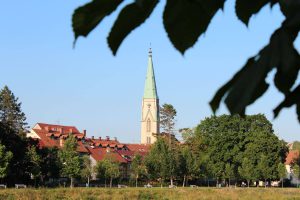 On the site of an older church, a three-nave basilica was first built in the 14th century. Later, a ribbed vault, a bell tower and a presbytery were added. At the beginning of the 15th century, a Gothic chapel of the Sorrowful Mother of God was added. The church, which has undergone several renovations over time, has been the cathedral of the Celje diocese since 2006. More information: TIC Celje
On the site of an older church, a three-nave basilica was first built in the 14th century. Later, a ribbed vault, a bell tower and a presbytery were added. At the beginning of the 15th century, a Gothic chapel of the Sorrowful Mother of God was added. The church, which has undergone several renovations over time, has been the cathedral of the Celje diocese since 2006. More information: TIC Celje
Slomškov trg 2
21. The statue of Virgin Mary
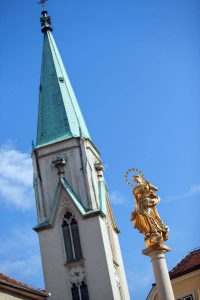 The statue of Virgin Mary stands on a high pillar on a triangular pedestal. Next to the pillar on a pedestal are Baroque statues of St. Rocco and St. Florian. In addition to them, the citizens of Celje also erected a statue of St. Joseph in the 19th century. Until the Second World War, the sides of the pedestal bore inscriptions in Latin, German and Slovene from the 19th century.
The statue of Virgin Mary stands on a high pillar on a triangular pedestal. Next to the pillar on a pedestal are Baroque statues of St. Rocco and St. Florian. In addition to them, the citizens of Celje also erected a statue of St. Joseph in the 19th century. Until the Second World War, the sides of the pedestal bore inscriptions in Latin, German and Slovene from the 19th century.
Glavni trg
22. The statue of Alfred Nobel
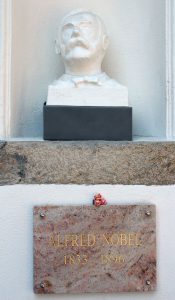
In a wall niche of the Kvartirna hiša from 1571, with preserved early Renaissance architecture, you may notice a bust of a Swedish scientist Alfred Nobel, who left most of his property for the awarding of the Nobel prizes. He donated a small part of his property in the form of an annuity to Sofia Hess, the daughter of a Celje merchant, with whom he had a complicated love affair for 20 years.
Gosposka ulica 3
23. The Archaeology Presentation Pavilion
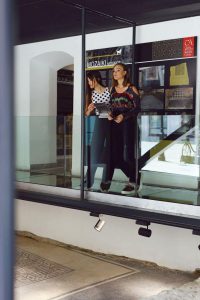 A part of the first medieval house in the city and a part of a late Roman villa with stunning mosaics are on display exactly where the archaeologists found them in 2013 – 2014 when the city street was undergoing renovation. The pavilion, which was awarded the prestigious European Heritage Award / Europa Nostra Award 2019, is made of glass on the outside and allows you to view the archaeological remains from several angles from the connecting bridges inside.
A part of the first medieval house in the city and a part of a late Roman villa with stunning mosaics are on display exactly where the archaeologists found them in 2013 – 2014 when the city street was undergoing renovation. The pavilion, which was awarded the prestigious European Heritage Award / Europa Nostra Award 2019, is made of glass on the outside and allows you to view the archaeological remains from several angles from the connecting bridges inside.
Glavni trg 17
24. Tourist Information Centre
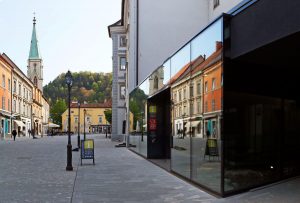 The Tourist Information Centre is found at the Archaeology Presentation Pavilion. In addition to all tourist information and various publications, it offers a selection of local, regional and national souvenirs. The works of local artists working within the Celje Art Quarter are especially interesting.
The Tourist Information Centre is found at the Archaeology Presentation Pavilion. In addition to all tourist information and various publications, it offers a selection of local, regional and national souvenirs. The works of local artists working within the Celje Art Quarter are especially interesting.
Glavni trg 17, T: 03 428 79 36
25. Tropical House
In the house, dedicated to education and protection of nature, you can learn about the habitats of the African savannah, Asian forest, Arizona desert and the Amazon jungle in a responsible way and learn about more than 50 animals – ambassadors of different animal groups. Among the most interesting are the lemurs from Madagascar.
Krekov trg 3, T: 051 386 658
- 11. CELJSKI DOM
- 22. The Celjska mestna hranilnica savings bank
- 33. The statue of Alma M. Karlin
- 44. The old Christian baptistery
- 55. TEHNOPARK
- 66. LJUDSKA POSOJILNICA Loan bank
- 77. City Market
- 88. The Museum of Recent History Celje
- 99. The Museum Craftman street
- 1010. Herman's Den
- 1111. Celjska rol'ca dessert
- 1212. The statue of Josip Pelikan
- 1313. Celje Art Salon
- 1414. The National House
- 1515. The Prince's Mansion
- 1616. The Gallery of Contemporary Art
- 1717. CELEIA – The City Beneath the City
- 1818. Celje Regional Museum
- 1919. The old castle of Celje
- 2020. The churc of St. Daniel
- 2121. The statue of Virgin Mary
- 2222. The statue of Alfred Nobel
- 2323. The Archaeology Presentation Pavilion
- 2424. Tourist Information Centre
- 2525. Tropical House


